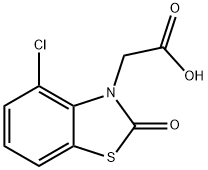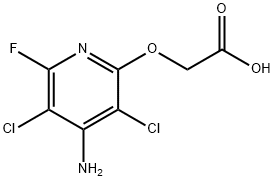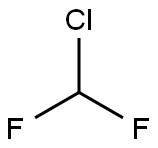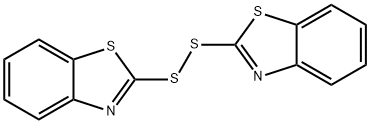Benazolin
- CAS NO.:3813-05-6
- Empirical Formula: C9H6ClNO3S
- Molecular Weight: 243.67
- MDL number: MFCD00057102
- EINECS: 223-297-0
- SAFETY DATA SHEET (SDS)
- Update Date: 2024-12-18 14:07:02

What is Benazolin?
The Uses of Benazolin
Benazolin is a selective systemic herbicide developed in the 1960s that has growth-regulatory action in susceptible plants. Structurally, it is a benzothiazolacetic acid and is unrelated to the four major groups of synthetic auxins discussed thus far. Benazolin controls a range of annual broadleaf weeds in alfalfa (Medicago sativa), canola (Brassica spp.), cereals, clover (Trifolium spp.), corn (Zea mays), grassland, and flax (Linum usitatissimum), and it has a relatively low persistence in the environment.
Definition
ChEBI: A member of the class of benzothiazoles that is 4-chloro-1,3-benzothiazol-2(3H)-one which is substituted on the nitrogen by a carboxymethyl group and at position 4 by chlorine. A post-emergence herbicide used (generally as a salt or este ) for the control of annual weeds in wheat and oilseed rape. It is not approved for use with the European Union.
Safety Profile
Moderately toxic by ingestion. Anherbicide. When heated to decomposition it emits toxicfumes of SOx, Cl-, and NOx.
Metabolism
Because benazolin is not degraded by light and is not readily volatilized, the most important factors affecting its persistence in the environment are microbial breakdown and leaching. However, because the microbial breakdown is so rapid, significant leaching may not occur unless the rainfall within a few days of application is large.
Toxicity evaluation
Benazolin is primarily excreted in the urine as N-[2-chloro-6-(methylsulfinyl)phenyl]glycine and N-[N-[2-chloro-6-(methylthio)phenyl]glycinyl]aniline. Acid-labile conjugates of benazolin acid and N-[2-chloro- 6-(methylthio)phenylglycine] are also formed in small amounts. The acute oral LD50 for rat and mice are >5000 mg/kg and >4000 mg/kg, respectively. See Table 21 for a list of toxicological data for benazolin.
Properties of Benazolin
| Melting point: | 192-196°C |
| Boiling point: | 468.4±55.0 °C(Predicted) |
| Density | 1.3274 (rough estimate) |
| refractive index | 1.6300 (estimate) |
| Flash point: | 100 °C |
| storage temp. | 0-6°C |
| pka | 3.50±0.10(Predicted) |
| color | White, crystalline solid |
| Water Solubility | 0.6g/L(20 ºC) |
| CAS DataBase Reference | 3813-05-6(CAS DataBase Reference) |
| EPA Substance Registry System | Benazolin (3813-05-6) |
Safety information for Benazolin
Computed Descriptors for Benazolin
New Products
4-Fluorophenylacetic acid 4-Methylphenylacetic acid N-Boc-D-alaninol N-BOC-D/L-ALANINOL Tert-butyl bis(2-chloroethyl)carbamate 3-Morpholino-1-(4-nitrophenyl)-5,6-dihydropyridin- 2(1H)-one Furan-2,5-Dicarboxylic Acid Tropic acid S-2-CHLORO PROPIONIC ACID ETHYL ISOCYANOACETATE 2-Bromo-1,3-Bis(Dimethylamino)Trimethinium Hexafluorophosphate (6-METHYL-[1,3]DITHIOLO[4,5-b]QUINOXALIN-2-ONE INDAZOLE-3-CARBOXYLIC ACID 4-IODO BENZOIC ACID (2-Hydroxyphenyl)acetonitrile 4-Bromopyrazole 5,6-Dimethoxyindanone 2-(Cyanocyclohexyl)acetic acid 4-methoxy-3,5-dinitropyridine 2-aminopropyl benzoate hydrochloride 1-(4-(aminomethyl)benzyl)urea hydrochloride diethyl 2-(2-((tertbutoxycarbonyl)amino) ethyl)malonate tert-butyl 4- (ureidomethyl)benzylcarbamate Ethyl-2-chloro((4-methoxyphenyl)hydrazono)acetateRelated products of tetrahydrofuran








You may like
-
 2033-24-1 98%View Details
2033-24-1 98%View Details
2033-24-1 -
 42831-50-5 5-METHYLISOXAZOLE-4-CARBOXYLIC ACID 98%View Details
42831-50-5 5-METHYLISOXAZOLE-4-CARBOXYLIC ACID 98%View Details
42831-50-5 -
 1975-50-4 98%View Details
1975-50-4 98%View Details
1975-50-4 -
 2-HYDROXY BENZYL ALCOHOL 98%View Details
2-HYDROXY BENZYL ALCOHOL 98%View Details
90-01-7 -
 2-Chloro-1,3-Bis(Dimethylamino)Trimethinium Hexafluorophosphate 221615-75-4 98%View Details
2-Chloro-1,3-Bis(Dimethylamino)Trimethinium Hexafluorophosphate 221615-75-4 98%View Details
221615-75-4 -
 61397-56-6 CIS BROMO BENZOATE 98%View Details
61397-56-6 CIS BROMO BENZOATE 98%View Details
61397-56-6 -
 14714-50-2 (2-Hydroxyphenyl)acetonitrile 98+View Details
14714-50-2 (2-Hydroxyphenyl)acetonitrile 98+View Details
14714-50-2 -
 118753-70-1 98+View Details
118753-70-1 98+View Details
118753-70-1